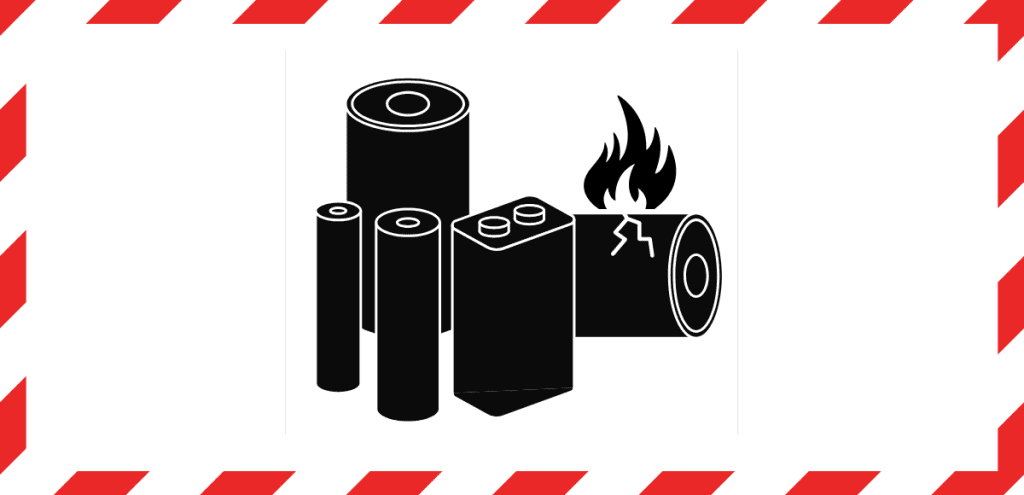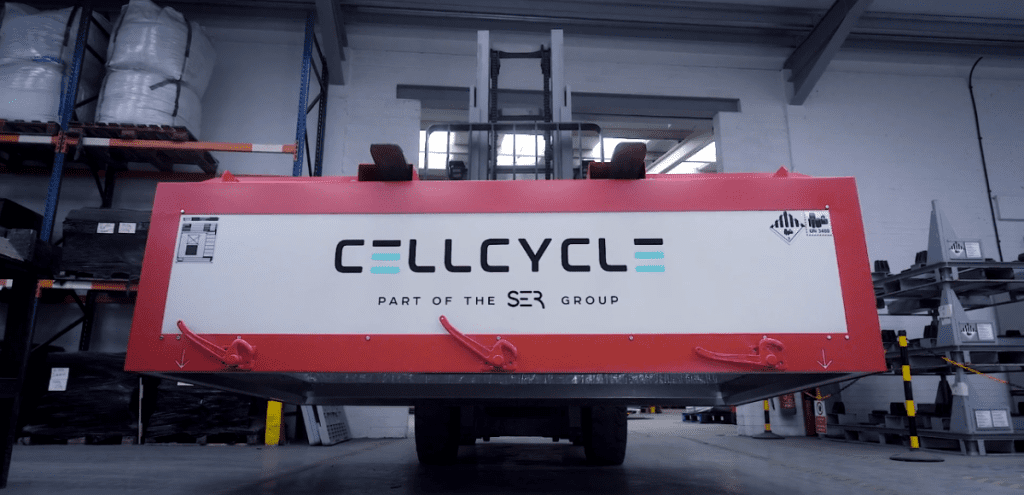1. Introduction
Lithium-ion batteries have become an integral part of our lives, powering everything from smartphones to electric cars. However, it’s important to handle and use them with caution, as they can be dangerous if mishandled. This article provides 5 important steps to ensure the safety of lithium-ion batteries, including how to handle them, what to avoid, and what to do in case of a fire. By following these guidelines, you can protect yourself and others from potential harm and maintain the longevity of these powerful energy sources.

Resource from: https://www.epa.gov/
2. Understanding the Importance of Battery Safety
Understanding the importance of battery safety is crucial in ensuring the safe and efficient use of lithium-ion batteries. These batteries contain highly reactive materials that can pose serious risks if mishandled. Therefore, it is essential to be aware of the potential hazards and take appropriate precautions.
First and foremost, it is important to handle lithium-ion batteries with care. Avoid exposing them to extreme temperatures, as this can lead to thermal runaway and cause fire or explosion. Additionally, never puncture or tamper with the battery, as it can release hazardous chemicals.
Furthermore, it is necessary to charge lithium-ion batteries using the appropriate charger. Using an incompatible charger can result in overcharging or overheating, leading to battery damage or failure. Always use the charger provided by the manufacturer or a reputable third-party charger that meets the required specifications.
Lastly, if you notice any signs of battery malfunction, such as swelling, overheating, or leakage, stop using it immediately and seek professional assistance. Ignoring such signs can put you at risk of injury or property damage.
By understanding the importance of battery safety and following these guidelines, you can ensure the safe and optimal use of lithium-ion batteries in your daily life. Stay tuned for the next section where we will explore additional steps to enhance battery safety.
3. Step 1: Proper Handling and Storage
Proper handling and storage of lithium-ion batteries is critical for ensuring their safety. When it comes to handling, always remember to treat the batteries with care and avoid any rough or forceful movements. This includes avoiding dropping or mishandling them, as this can cause internal damage and increase the risk of a thermal runaway.
In addition to handling, proper storage is equally important. Make sure to store lithium-ion batteries in a cool and dry place, away from direct sunlight and extreme temperatures. Exposing the batteries to excessive heat or cold can result in a loss of performance and may even cause irreversible damage.
Furthermore, it is essential to store lithium-ion batteries in a non-conductive container that prevents any potential short circuits. Avoid storing them with other metal objects, such as coins or keys, to prevent any accidental contact that could lead to a short circuit.
By following these steps for proper handling and storage, you can significantly reduce the risks associated with lithium-ion batteries and ensure their long-lasting safety and performance. Stay tuned for the next section, where we will discuss an important step in maintaining battery safety: regular inspection and maintenance.
4. Step 2: Regular Inspection and Maintenance
Proper inspection and maintenance play a crucial role in ensuring the safety and longevity of lithium-ion batteries. Regularly inspecting your batteries allows you to identify any signs of damage or deterioration and take appropriate action to prevent potential hazards.
Firstly, visually inspect the batteries for any physical damage such as dents, bulges, or leaks. These are indications of internal damage and can lead to a thermal runaway. If you notice any of these signs, carefully dispose of the battery following the manufacturer’s guidelines.
Secondly, check the battery connectors for any corrosion or loose connections. Corrosion can interfere with the proper functioning of the battery and increase the risk of overheating. Clean the connectors with a soft cloth or brush and ensure a secure connection.
Lastly, monitor the battery’s performance and capacity regularly. If you notice a significant decrease in performance or a shorter battery life, it may be time to replace the battery. Using a deteriorated battery can result in overheating and other safety issues.
By regularly inspecting and maintaining your lithium-ion batteries, you can identify and address potential safety concerns before they become major problems. Stay tuned for the next section, where we will discuss another important step in ensuring battery safety: proper disposal and recycling.
5. Step 3: Charging and Discharging Safely
Proper charging and discharging practices are essential for maintaining the safety and efficiency of lithium-ion batteries.
When charging your batteries, it is crucial to use the correct charger recommended by the manufacturer. Using incompatible chargers can lead to overcharging, which increases the risk of thermal runaway and battery failure. Additionally, avoid using damaged charging cables or adapters as they can cause short circuits, overheating, and potential fire hazards.
Always charge your batteries in a well-ventilated area and avoid charging them overnight or unattended. This helps prevent overheating and ensures that you are aware of any potential issues that may arise during the charging process.
Similarly, use caution when discharging your batteries. Avoid completely draining your batteries as this can cause irreversible damage. Instead, try to maintain a safe minimum charge level recommended by the manufacturer. Discharge your batteries at a consistent rate to prevent overheating and minimize the risk of sudden failure.
Following these charging and discharging practices will help prolong the lifespan of your lithium-ion batteries and ensure their safe operation. In the next section, we will discuss the importance of proper storage to further enhance battery safety.
6. Step 4: Transporting Lithium-ion Batteries
Transporting lithium-ion batteries requires careful attention to ensure their safety. Whether you are shipping batteries or traveling with them, following the proper guidelines is essential.
When shipping lithium-ion batteries, it is crucial to comply with the regulations set by transport authorities. Different modes of transportation, such as air, road, or sea, have specific rules and restrictions. Make sure you are familiar with these guidelines and package your batteries accordingly.
If you are carrying lithium-ion batteries during travel, ensure they are properly protected to prevent any damage or short circuits. Remove the batteries from the device and place them in a separate, secure container. It is best to carry them in your carry-on luggage rather than checked luggage, as the temperature and pressure in cargo compartments can affect battery safety.
Always remember not to expose lithium-ion batteries to extreme temperatures during transportation. High temperatures can lead to thermal runaway, and low temperatures can reduce battery performance.
By following these guidelines for transporting lithium-ion batteries, you can prevent accidents and ensure the safety of both yourself and others. In the next section, we will discuss the significance of regular maintenance and inspection of these batteries.
7. Step 5: Responding to Battery Malfunctions
While taking preventative measures is important for ensuring the safety of lithium-ion batteries, it is equally crucial to know how to respond in case of a battery malfunction. Battery malfunctions can lead to dangerous situations, such as overheating, fires, or even explosions. Therefore, it is essential to be prepared and take prompt action if you encounter any issues.
If you notice any signs of battery malfunction, such as excessive heat, swelling, or leakage, it is crucial to stop using the battery immediately. Remove it from the device, if possible, and place it in a safe, fireproof container away from flammable materials.
Do not attempt to disassemble or repair the battery yourself. Instead, contact a professional battery service provider or the manufacturer for assistance. They have the expertise and equipment to safely handle and dispose of malfunctioning batteries.
By responding appropriately to battery malfunctions, you can minimize the risk of accidents and protect yourself, others, and your valuable electronic devices. In the final section, we will conclude by emphasizing the significance of implementing these safety steps to maintain the longevity and performance of lithium-ion batteries.
8. Conclusion: Prioritizing Safety in Lithium-ion Battery Usage
In conclusion, prioritizing safety when using lithium-ion batteries is of utmost importance. By following the five important steps outlined in this blog, you can significantly reduce the risk of battery malfunctions and ensure the well-being of yourself, others, and your electronic devices.
Remember to always handle lithium-ion batteries with care and keep them away from extreme temperatures, water, and other hazardous conditions. Regularly inspect your batteries for any signs of damage or malfunction and replace them if necessary. It is also crucial to use the appropriate charging equipment and avoid overcharging or leaving batteries unattended while charging.
By implementing these safety steps, you can not only protect yourself and your devices from potential accidents but also prolong the lifespan and performance of your lithium-ion batteries. Stay safe and enjoy the convenience and efficiency that these batteries offer in our modern lives.


